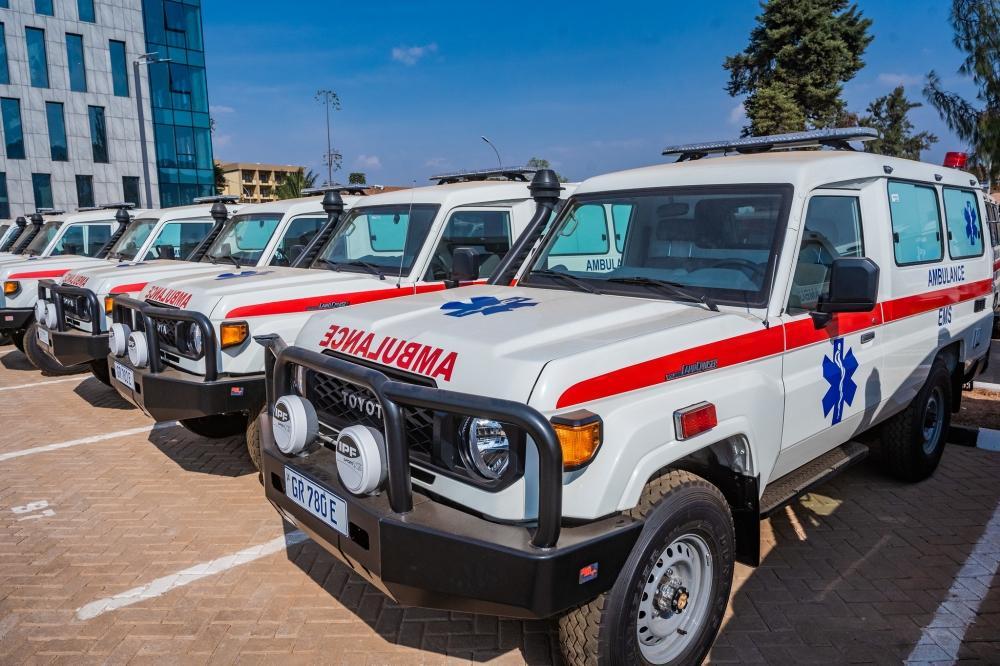Africa-Press – Rwanda. Rwanda’s emergency health response capacity has received a major boost as the number of ambulances across the country has more than doubled, from 230 in 2023 to 510 in May 2025, as revealed by the Minister of Health, Dr Sabin Nsanzimana.
During the 2025/26 national budget hearings in Parliament, on May 13, the minister said the additional ambulances are expected to reduce response times, improve maternal health outcomes, and ensure equitable access to emergency medical care.
“Due to the nature of the work, each ambulance is typically operated by three drivers. It became necessary to increase the number of drivers from 500 to 700, we also introduced a special system, where previously a patient would wait about 30 minutes for an ambulance but now the average response time has been reduced to 14 minutes.”
The newly acquired ambulances are equipped with advanced safety and navigation technologies, including an 80 km/h speed limit, anti-drunk-driving mechanisms, and GPS-enabled tracking systems to facilitate coordination and timely response.
“These investments are also expected to directly contribute to reducing Rwanda’s maternal mortality rate, which the ministry aims to bring down to 105 per 100,000 live births,” he added.
MP Venuste Icyitegetse raised concerns about the financial constraints some hospitals face in maintaining the vehicles.
“During our inspections in various areas, we found that paying for comprehensive insurance for these vehicles is very expensive, and there should be an effort to support hospitals,” she said.
Nsanzimana acknowledged the issue, noting that several districts have already stepped in to assist facilities with insurance payments. He assured lawmakers that beginning in July, the ministry made vehicle insurance one of its key financial priorities.
Beyond ambulance expansion, the Ministry of Health is also pushing for digital transformation in the sector.
According to the minister, 333 out of 533 health centers now have a full set of computers, and 49 out of 57 hospitals are connected to broadband internet.
To support community health work, 31,534 mobile phones were distributed to health workers so far, out of the 58,567 needed.
“We’ve also established a centralized Health Information Center (HIC), which consolidates data from across the health system to support evidence-based decision-making,” he added.
As of May, the health sector has executed 98% of its allocated budget, amounting to Rwf72.1 billion.
Dr Nsanzimana emphasized that the fleet expansion is already bearing fruit, particularly in rural areas where access has historically been a challenge. He noted that the ministry is working with local authorities to rehabilitate roads and ensure ambulances can reach the most remote communities.
“Our focus now is not only to increase numbers but to ensure these ambulances reach where they are needed most to save lives,” he said.
The World Health Organization recommends one ambulance for every 40,000 to 50,000 people.
Rwanda is currently ahead of that standard, with one ambulance serving approximately 30,000 people.
The government is aiming at reducing the ratio to one ambulance per 20,000 people.
For More News And Analysis About Rwanda Follow Africa-Press






